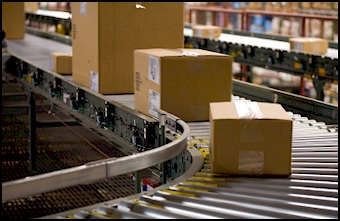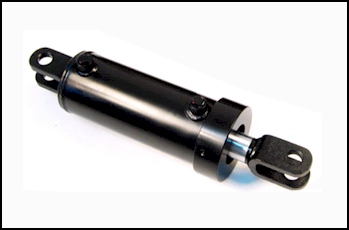Polyurethane Casting and Molding
Polyurethane casting/molding is a process to create parts and components for all types of industries. These molded polyurethane components are available with fast prototype creation, low overall tooling costs, and are customized according to customer requirements.
For the production of high-quality thermoset products, polyurethane casting/molding offers exceptional tolerances with a wide variety of hardness, color, physical properties, and chemical resistance. Polyurethanes can be cast as soft as rubber or as hard as nylon 6/6. Polyurethane parts offer long service life due to their superior physical properties.
Polyurethanes are Superior to Plastic, Metal, & Rubber
Thermoset polyurethanes are often found far superior to other materials such as plastic, rubber, and metal. Molded polyurethane parts offer high load and high compression abilities that function long after rubber and plastic parts have failed. Cast molded polyurethane parts can be made iron-strong or sponge-soft, in any color or shape. In addition, polyurethane components offer long run durability and extreme resistance to harsh environments of heat, solvents, chemicals, and abrasion.
Industries Using Molded Polyurethane Components
| Material Handling | Automotive | Military & Defense | Corrugated Box |
| Chain Conveyor | Elevator/ Escalator | Postal Service | Food Processing FDA |
| Medical & Surgical | Bowling Industries | Marine/ Maritime | Power Transmission |
| Mining & Drilling | Seals/ Gaskets | Industrial Cleaning | Energy |
Case Study:
Bottle and Canning Industry uses Molded Polyurethane Components
Millions of bottles and cans are created and processed in factories using cast and molded polyurethane components created by MPC. These polyurethane parts used in conveyor belt systems offer long service life, excellent grip strength, and lower noise abatement to other materials. For bottling and canning, this reduces downtime and downstream issues usually associated with lesser materials.


Product Engineers Prefer Polyurethane
Polyurethane parts provide longer service life when compared to plastics and rubber, and lower noise abatement properties when compared to metals. For these and many other reasons product engineers specify polyurethane components
What is Urethane Casting?
The process of urethane casting, also known as polyurethane casting, begins with the formation of a mold that can be made from many different materials including aluminum, silicone, 3D printing, and steel. The liquid urethane is cast into a mold with a CNC urethane machine at 100°C/212°F temperature. The molds then move into a high-temperature oven where the urethane hardens to a solid and then the part forms in the mold. The temperature and flow rate are closely monitored to ensure the highest quality of the final product.
Urethane casting is a fast, efficient, and inexpensive method for the production of durable and long-lasting parts. They can be produced in a variety of sizes with high tolerance precision. The polyurethane casting process allows for high quantity through continuous casting or low volume parts including R&D requirements.
One of the added features of urethane casting is the ability to add threaded or other metal components during the casting process.
What is Polyurethane Molding?
Cast polyurethane, or urethane, (these terms mean the same thing) molding is typically a two-component system of urethane and curative. The two components are heated, dynamically mixed, and cast into a heated mold. The two chemicals under heat crosslink and form a new stronger molecule now a thermoset compound.
This new thermoset compound is stronger than thermoplastics and rubbers because of the crosslinking. Once formed they can’t be melted back down, reground, or used in any way in the production process again.
The continuous casting process can produce thousands of parts per day or a single mold can be filled to make one part only.
Urethane is a perfect material for molding since it can easily be adapted to any shape and form. It is also able to produce parts that are sturdy and rigid or ones that are pliable and soft. These variations in the characteristics of polyurethane make it an ideal material for the production of strong, long-lasting, and durable parts.
The polyurethane molding process is used for the production of high volumes of parts that can range into tens of thousands. When large quantities are required and time is important, polyurethane molding is an excellent choice since it can produce thousands of parts per day with every part having the same quality and tolerances.
Benefits of Polyurethane
Due to the fact that polyurethane is lightweight, has low production costs, and has exceptional physical properties, polyurethane is adaptable to a variety of industrial uses. The urethane parts have noise abatement, chemical resistance, abrasion resistance, and excellent cut and tear properties. Some of the many parts made with cast urethane are: gears, sprockets, bumpers, rollers, automotive mounts, seals, and many more items.
One of the outstanding benefits of urethane is its ability to be custom-designed to provide solutions for unique, unusual, and specialized manufacturing conditions. Parts can be produced that weigh a few grams or up to thousands of pounds. The only requirement is the submission and creation of the design to be produced.
Prototyping
Unlike other thermoplastic or rubber materials, thermoset polyurethane can easily generate a prototype from a CAD design. This one feature makes it possible to examine the final product before it goes into production and allows for making any necessary adjustments. Prototyping saves time, and costs and makes it possible to take a computer rendering and turn it into a usable part.
Regardless of the method used, products, parts, and components produced using polyurethane, or urethane, have the strength, endurance, and quality that are necessary attributes in today’s competitive market




